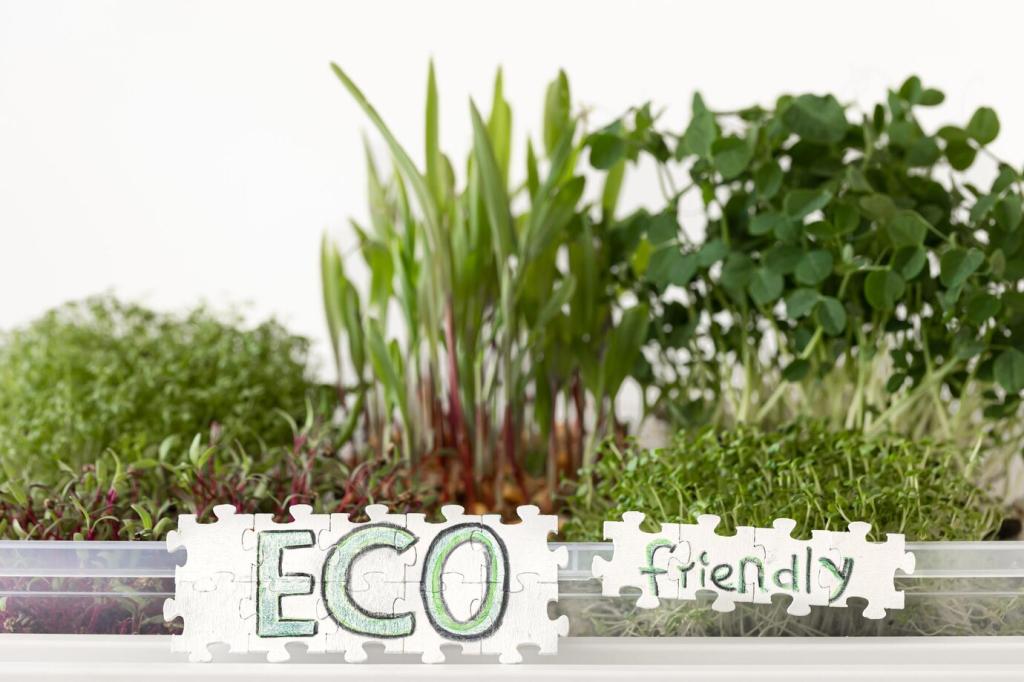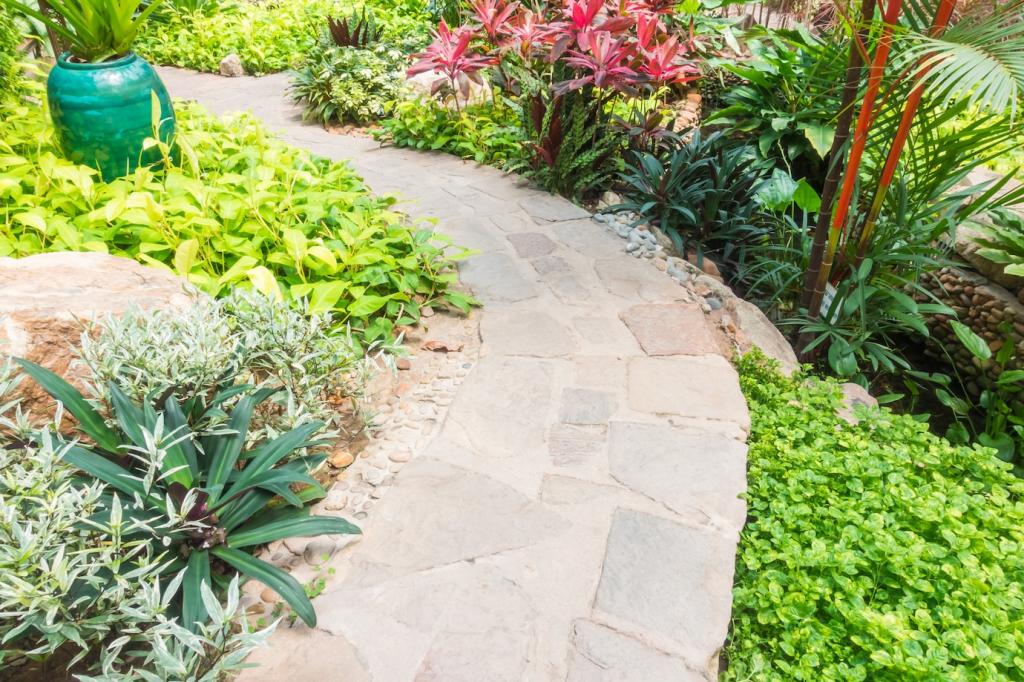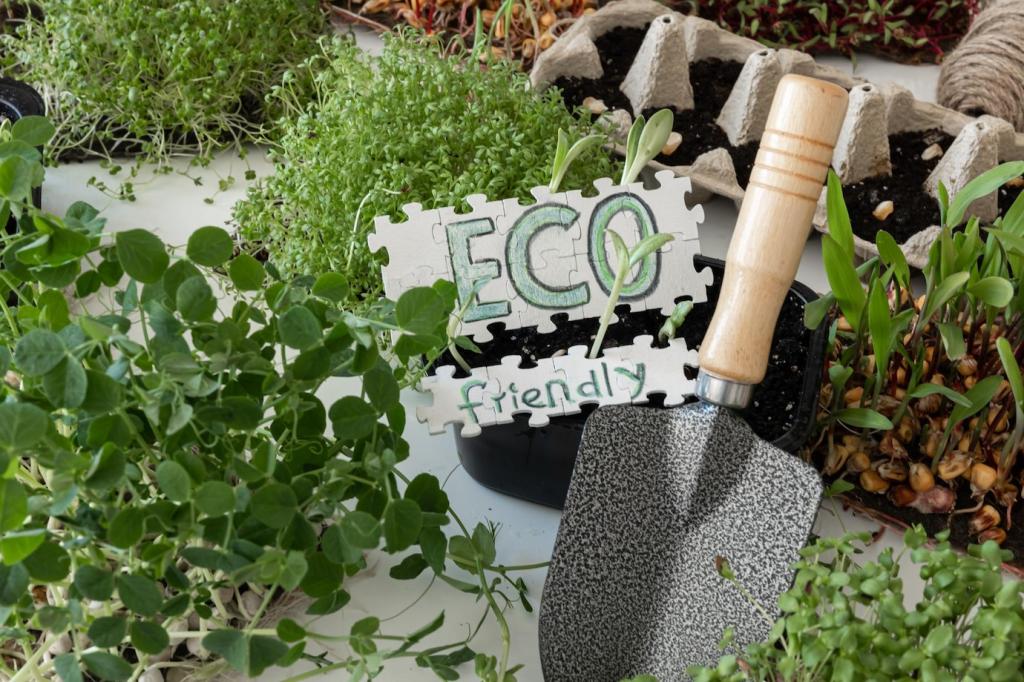
Harvest the Sky: Rainwater Harvesting Techniques for Landscapes
Chosen theme: Rainwater Harvesting Techniques for Landscapes. Learn how to capture, store, and use rainfall to nourish gardens, protect soil, and cut water bills. Join our community, subscribe for updates, and share your goals so we can celebrate your first captured storm together.
Why Rainwater Harvesting Belongs in Every Landscape
Turning Runoff Into a Resource
Every roof in a neighborhood is a quiet reservoir. By guiding rainfall into barrels, cisterns, and planted basins, you reduce waste, replenish soil moisture, and create a dependable water source that thrives between storms. Tell us your roof size and we’ll help estimate your capture potential.
Reducing Flooding and Erosion
Unmanaged runoff scours beds, compacts soil, and floods paths. Rain gardens, bioswales, and permeable paths slow water down, spread it out, and sink it safely. Share your problem spots in the comments, and we’ll suggest shape, slope, and planting strategies tailored to your yard.
Local Rules, Simple First Steps
Most regions welcome rainwater harvesting, but materials, mosquito prevention, and backflow protection may be regulated. Start with clean gutters, a downspout diverter, and a screened barrel. Subscribe for our checklist and a printable conversation guide for talking with neighbors and local officials.

Catchment Basics: Roofs, Gutters, and First-Flush
Metal, clay, and concrete roofs typically yield cleaner runoff than aging asphalt shingles. Avoid harvesting from treated wood or copper roofs for edibles. If you plan to irrigate vegetables, add a first-flush diverter and keep roof debris minimal. Ask questions below about your specific roof.
Smart Storage: Barrels, Cisterns, and Underground Tanks
Use average monthly rainfall, roof area, and irrigation needs to determine volume. Larger tanks bridge longer dry spells, while multiple smaller barrels are flexible and easy to install. Share your climate zone and we’ll send a starter sizing worksheet tailored to your landscape.
Smart Storage: Barrels, Cisterns, and Underground Tanks
Food-grade plastic, fiberglass, and lined metal tanks are common choices. Place tanks close to downspouts and gardens to minimize piping. Paint, trellises, or cladding help tanks blend beautifully. Post your style ideas, and we’ll share reader photos for inspiration and practical tips.

Efficient Distribution: Gravity, Drip, and Smart Controls
Gravity-Fed vs. Pump-Assisted
Elevated barrels provide enough head for soaker hoses on gentle slopes, while pumps unlock drip precision and uphill runs. Consider quiet, efficient pumps with pressure regulators. Ask about your elevation changes, and we’ll recommend a simple path from tank to garden beds.


Drip Lines, Soakers, and Mulch
Drip emitters and soaker hoses reduce evaporation and keep foliage dry, limiting disease. Pair them with two to three inches of mulch to hold moisture and protect soil life. Comment with bed dimensions, and we’ll help map emitter spacing and flow rates for your plants.

Infiltration Design: Rain Gardens, Bioswales, and Permeable Paths
Select native plants adapted to wet-to-dry cycles: deep-rooted grasses, sedges, and flowering perennials for pollinators. Layer elevations for ponding and quick drainage. Share your plant list and sun exposure, and we’ll suggest species that thrive with captured rainfall in your region.

Before: A Thirsty Lawn and Flooded Walkway
One reader in a dry-summer climate watched spring storms flood a path while summer irrigation drained the budget. We mapped flows with chalk in the rain, noted low spots, and penciled a rain garden where puddles lingered longest. Share your map, and we’ll cheer you on.
During: Community Build Day
Friends arrived with shovels, and the neighborhood kids placed rocks into check dams. A 200-gallon barrel fed a simple soaker loop under mulch. By dusk, the walkway stayed dry. Post a photo of your build crew, and we’ll feature your project in our subscriber roundup.
After: Blooms, Butterflies, and Lower Bills
That fall, asters and grasses exploded with color after a gentle storm, and water use dropped. The homeowner kept a rain log, tuning overflow into the swale during heavy events. Start your own rain journal, and tag us when the first butterflies arrive to celebrate your success.
Maintenance, Safety, and Measuring Success
Clear gutters each fall and spring, check screens monthly during leaf drop, and flush first-flush units after big storms. Tighten fittings, test valves, and confirm overflow paths. Subscribe for our printable maintenance calendar and reminders timed to your local rainy season.
Maintenance, Safety, and Measuring Success
For vegetables, route the first flush away, keep roofs clean, and irrigate soil, not leaves. Avoid copper contact and never connect to drinking lines without approved backflow protection. Share your crop list, and we’ll help align safe practices with your harvesting and cooking habits.


